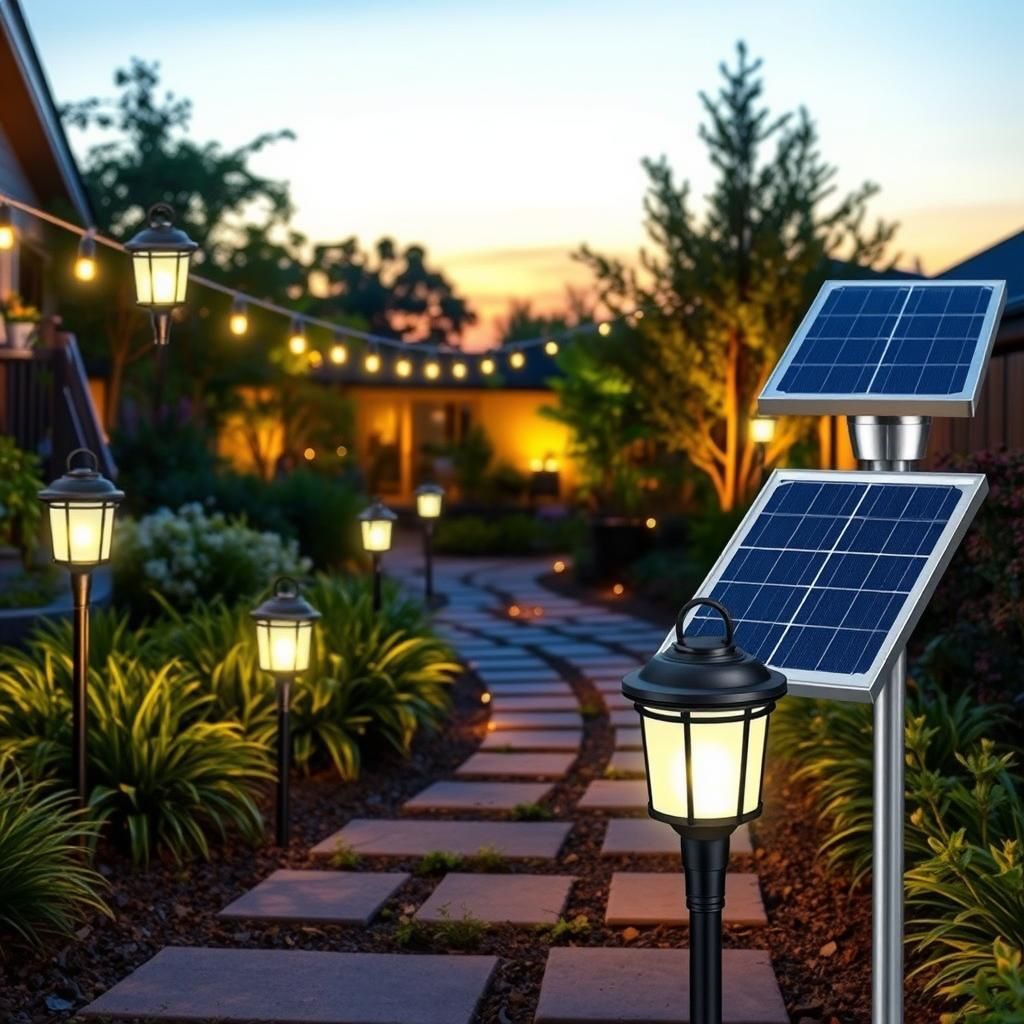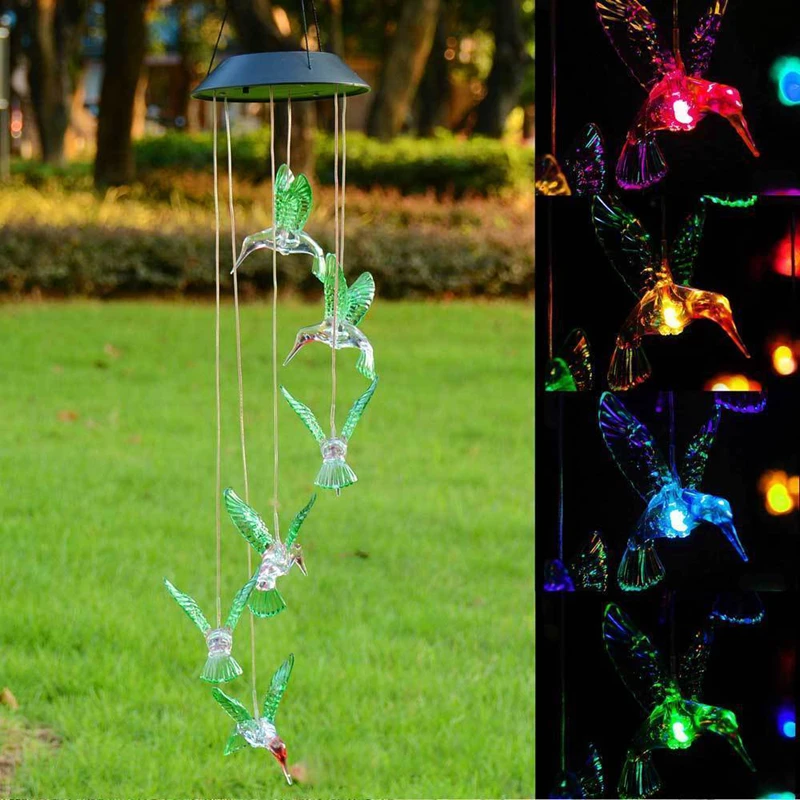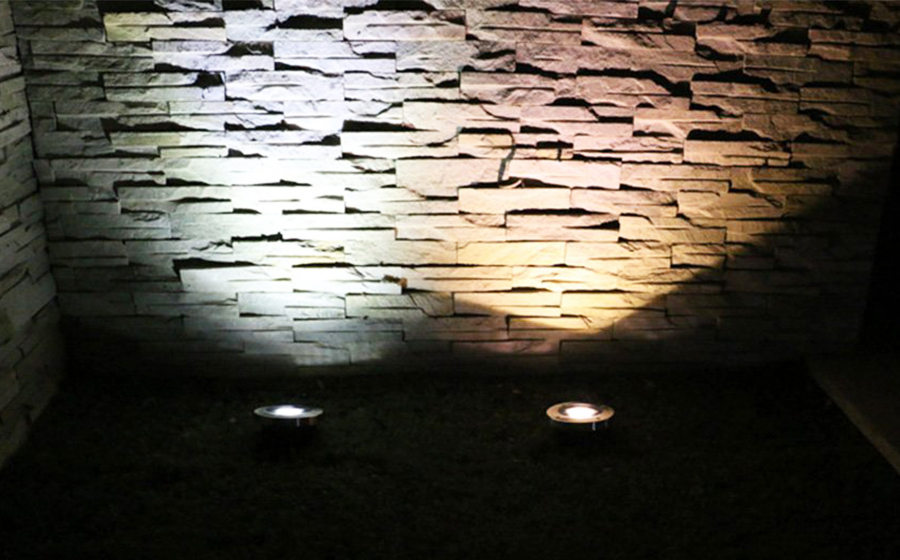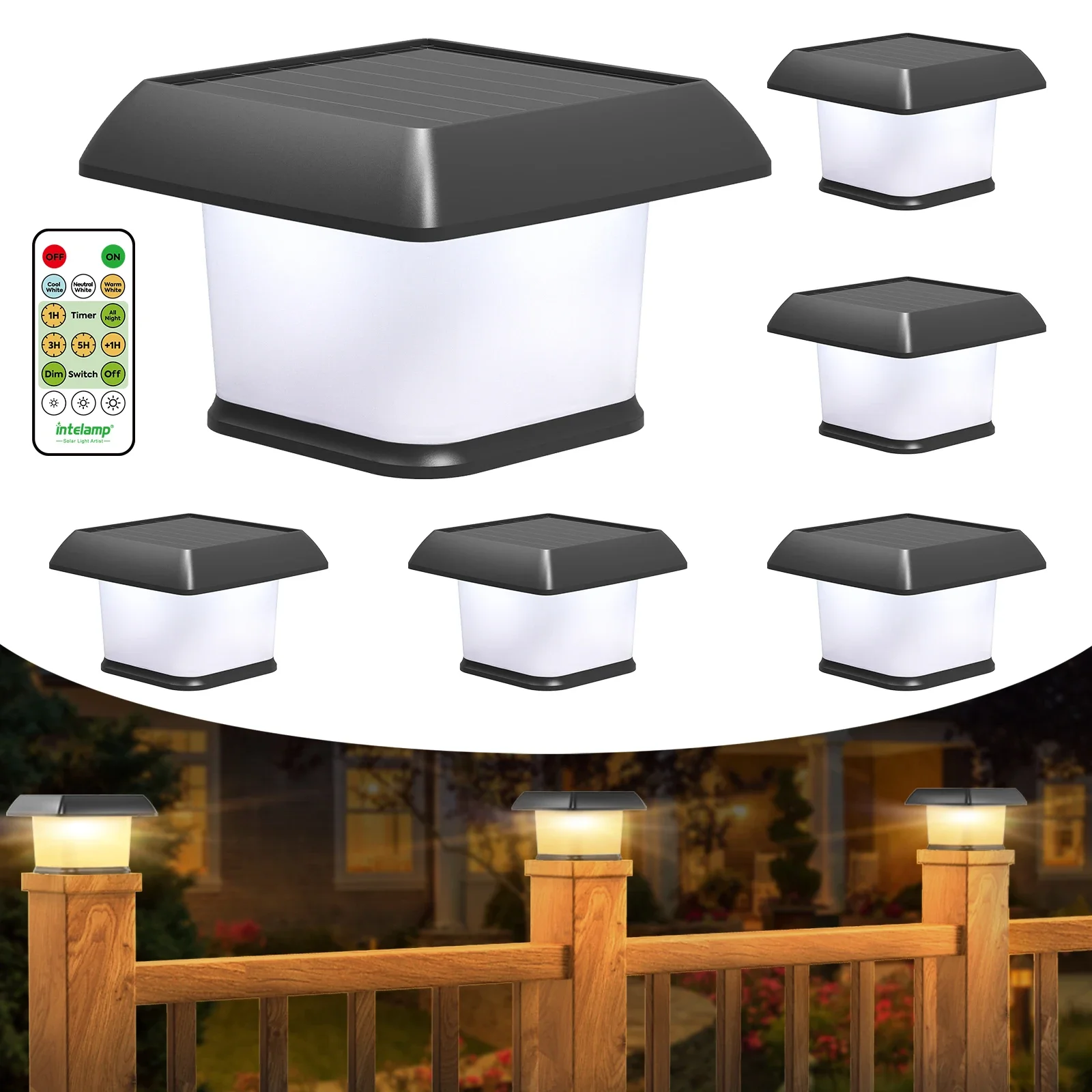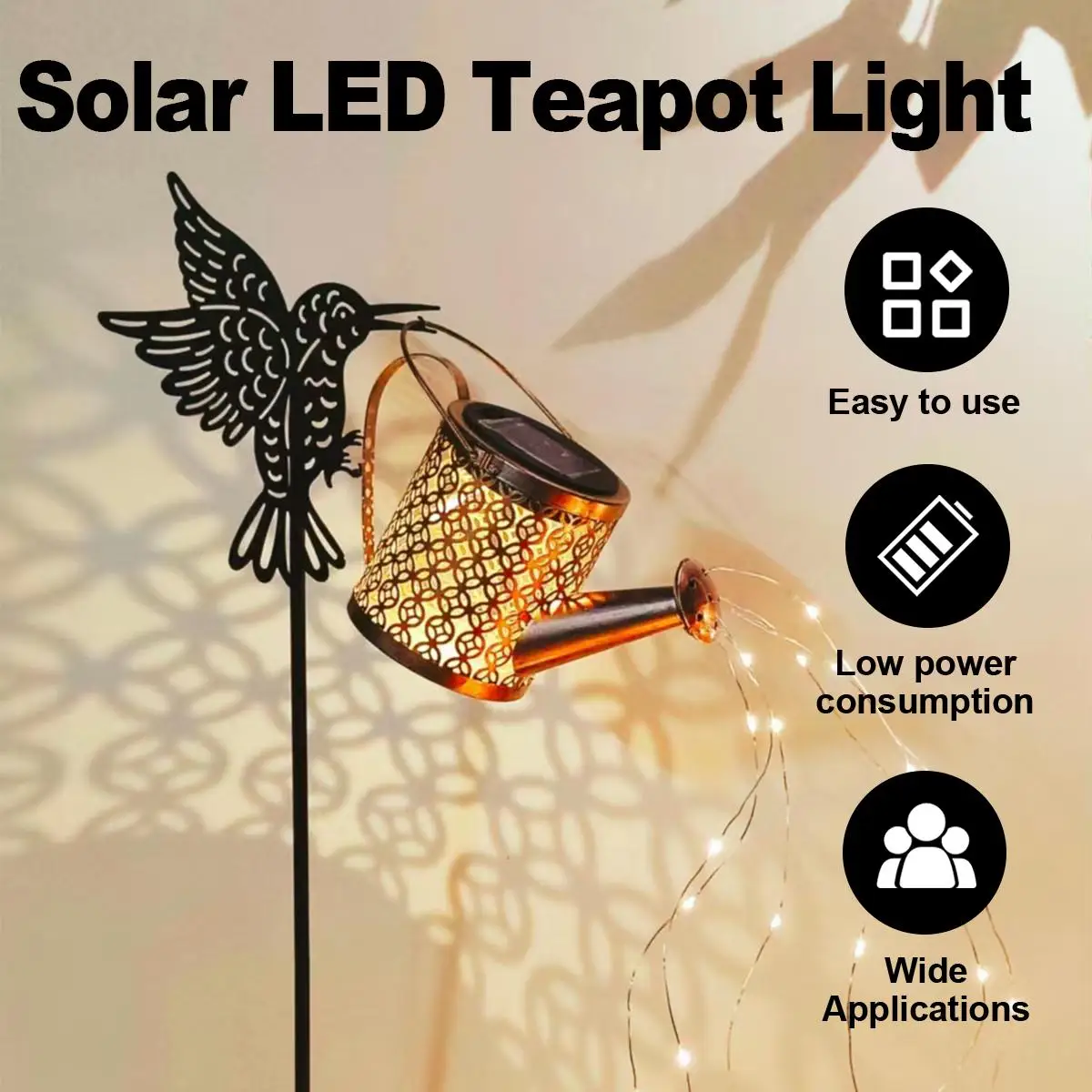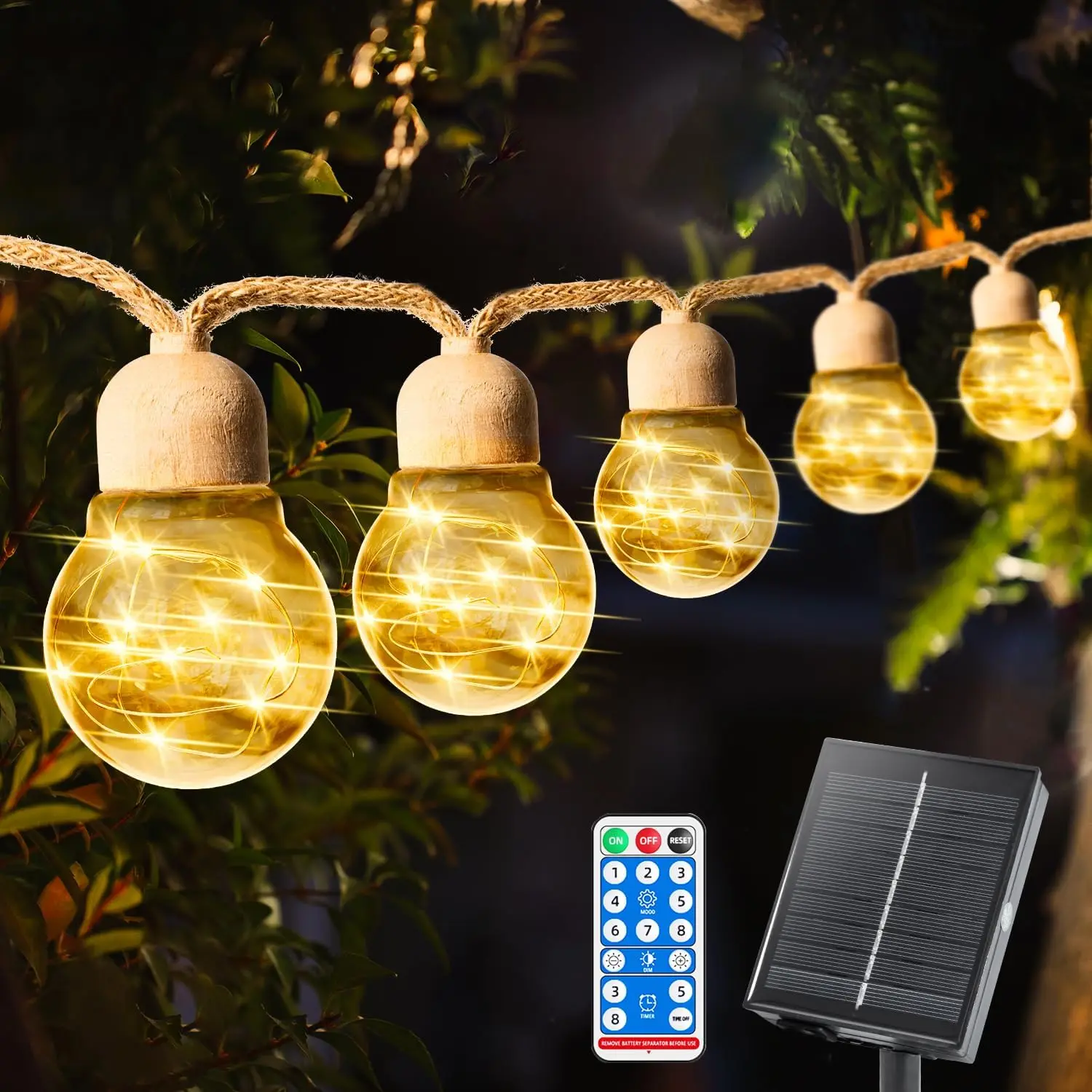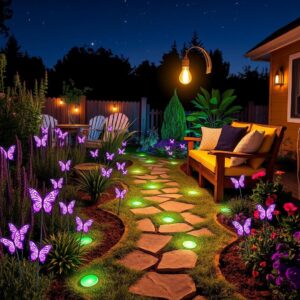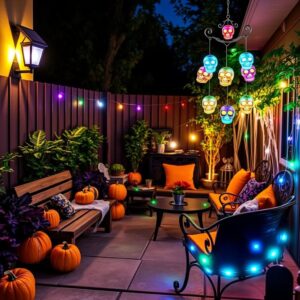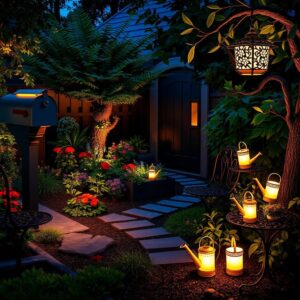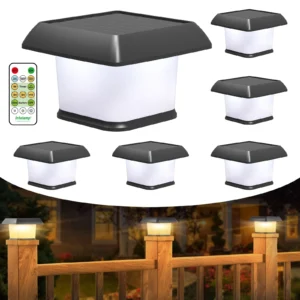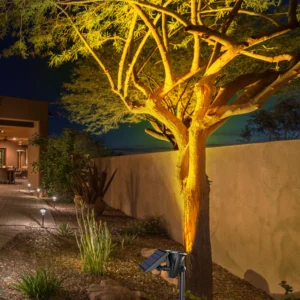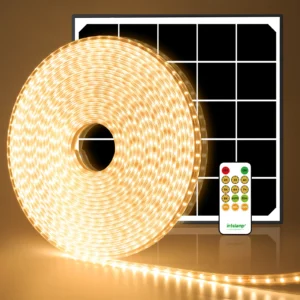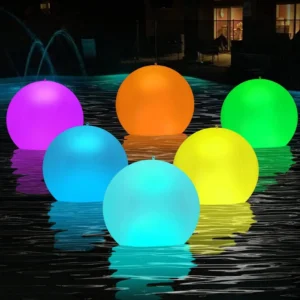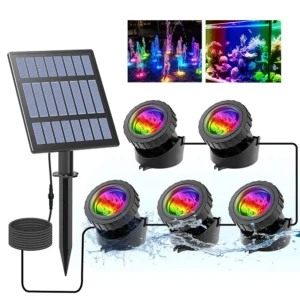Solar Pendant Lights with Remote Control – Waterproof Chandelier
Understanding Solar Light Working Hours
When it comes to how long solar lights shine, the simple answer is: it varies—but typically, you’re looking at somewhere between 6 to 12 hours on a full charge. This runtime hinges mostly on how much sunlight those tiny panels soak up during the day and the capacity of the battery tucked inside. Think of it like filling a water bottle; the bigger the bottle (battery) and the longer you fill it under a strong sun, the longer the light can quench the night.
Solar lights aren’t all cut from the same cloth, either. Different styles—pathway stakes, hanging lanterns, or stately lamp posts—each have their own working hours, usually ranging from about 4 to 12 hours after the sun dips below the horizon. On average, you can count on these guardians of evening glow to keep their light beacons alive for roughly 8.5 hours during a good day.
Why the range? Battery size and sunlight hit are the main players. A solar path light in full stride meets its mark more easily than one stuck under a shady tree or during a stretch of gloomy weather. Those hanging or lamp post lights generally pack larger batteries, often translating into longer-lasting evening brilliance.
Picture this: you have a solar stake light marking your garden path. On a sunny summer afternoon, it might soak up enough juice to gently illuminate your walkway all evening—perhaps up to 12 hours. But come a cloudy day or an early winter dusk, that glow could trim down to 6 or so hours, leaving your garden with a quiet, early shadow.
In essence, solar lights work on the whims of the sun, and understanding their typical runtime unlocks the magic of planning your outdoor spaces. With the right placement and a little care, these solar companions will grace your nights with their untiring glow, painting your garden in natural, sustainable light.
Hummingbird Solar Lights Wind Chime with Color-Changing LEDs
Factors Affecting Solar Lights Performance
When it comes to how long your solar lights glow after dusk, several key factors quietly shape their nightly performance. Understanding these can help you set realistic expectations and get the most out of your solar-lit evenings without fuss.
First up, the battery capacity and its health. Think of the battery as the heart of your solar light—its size, usually measured in milliampere-hours (mAh), directly influences how long the light can run. Larger batteries pack more punch, often doubling the runtime compared to smaller ones. But it’s not just size; over time, batteries lose their oomph. An aging battery simply won’t hold a full charge, shrinking your garden’s glowing hours. Keeping these batteries fresh, or at least knowing when to swap them out, can keep your nights bright.
Next is the solar panel efficiency—the magic that turns sunlight into stored energy. A high-quality panel can sip sunlight all day and fill the battery faster. Panels vary in their tech and material, but the more efficient they are, the better they charge, even when the sun isn’t at its fiercest. A dusty or shaded panel, however, is like a thirsty sponge with no water—it just won’t soak up enough to power your evening display.
LED brightness is another player to consider. Brighter LEDs dazzle but demand more juice, draining batteries quicker and cutting your light’s staying power. Sometimes dialing the brightness down a notch can prolong the magical glow well into the night.
And then, there’s the weather—nature’s wildcard. Cloudy, rainy, or snow-blanketed days dim the sun’s generosity, leaving your solar panels thirsting. While solar lights do manage to charge even under overcast skies or winter’s short days, the reduced sunlight means shorter runtime after dark. It’s a gentle reminder that solar magic, while reliable, dances with the rhythms of the weather.
By keeping these factors in mind—from battery basics and panel health to LED brightness and changing skies—you can better tailor your solar light setup to your garden’s unique conditions, ensuring your outdoor space stays gently illuminated night after night.
Solar Disc Lights for Garden Pathway Deck Outdoor
Solar Light Battery Life Explained
When it comes to solar lights, battery life isn’t just a feature—it’s the heartbeat of how long your garden will glow. The battery stores the energy collected from sunlight during the day, releasing it to power your lights after dusk. Understanding the nuts and bolts of these batteries can save you from endless frustration and help you enjoy your solar-lit evenings longer.
Importance of Battery Maintenance
Batteries, like any rechargeable device, don’t last forever. Over time, their capacity to hold a charge dwindles, and your solar lights might start fading earlier each night. Regular maintenance—checking the battery health and swapping out old cells—can go a long way toward keeping your lights shining bright. Don’t ignore this step: a neglected battery can turn your magical pathway into a dim struggle every night.
The good news? Replacing batteries in most solar lights is straightforward. Many models feature easy-access compartments so you can upgrade to fresh batteries without fuss. Keep an eye on reduced runtime—that’s your cue to swap. Neglect this, and you’ll find your lights flickering out before the evening even settles.
Battery Types Used in Solar Lights
Most solar lights use one of a few battery chemistries, each with its strengths and weaknesses:
Nickel-Metal Hydride (NiMH): Common in affordable solar lights, NiMH batteries offer a decent balance between cost and capacity. They hold charge well but tend to degrade faster over just a couple of years, especially under constant charging cycles.
Lithium-Ion (Li-ion): Growing in popularity, these batteries pack more punch with higher capacity and longer lifespan. They charge faster and can last several years if cared for properly, making them a smart upgrade for anyone wanting longer, more reliable illumination.
Nickel-Cadmium (NiCd): Less common nowadays due to environmental concerns, NiCd batteries are robust but suffer from memory effect—meaning they lose capacity if not fully discharged before recharging.
Choosing the right battery type can influence how long your solar lights work each night and how often you’ll need replacements. If your lights feel weak after a sunny day, it might be time to consider an upgrade to a higher-quality battery.
In essence, the magic of solar lighting lasts as long as the heart beneath it—the battery. Treat those cells well, know when to replace, and your garden can stay wrapped in solar-lit warmth long into the night.
intelamp Outdoor Solar Post Light with Remote Control
Maximizing Solar Light Runtime: Practical Tips
Maximizing the hours your solar lights glow isn’t about secret tricks or fancy gadgets—it’s about smart, straightforward choices. When your solar lights run longer, they don’t just brighten your evenings—they elevate your whole outdoor experience. Here’s how to get the most out of that daytime sunshine and stretch those working hours well into the night without fuss.
Optimal Placement
Your solar lights need sunlight—plain and simple. Think of them like little solar sponges soaking up rays. To wring out their full potential, place them where they can bask in direct sunlight for at least 6 to 8 hours every day. A spot free from tree shadows, tall fences, or sprawling bushes is a must. Even a subtle shade can cut charging time drastically, leaving your lights flickering early or dimmer than you’d like. So scout out the sunniest patch for each light—it’s the most effective way to guarantee a full nightly charge.
Solar Panel Cleaning and Maintenance
Dust, dirt, and grime on solar panels are invisible daylight thieves. They block precious sunlight, reducing how much power your light stores. A quick routine wipe-down every few weeks can boost your system by leaps and bounds. Use a soft cloth and a bit of water—nothing abrasive—to keep panels gleaming and hungry for sun. Think of it like cleaning your glasses to see clearer; clean panels “see” more sunlight and charge more efficiently. Even small improvements here add up to extra glowing hours after dusk.
Usage Practices
Sometimes less is more. If your solar lights have an on/off switch, turn them off during extended daylight periods or when you won’t be needing them. This simple habit preserves battery life by preventing unnecessary drain. Also, consider the brightness level you choose—brighter LEDs do dazzle but use more juice, cutting run time shorter. If soft, warm glows suit your mood (and your garden vibe), dialing down brightness can mean a longer, steadier shine through the night. Choose smartly and adjust based on your space and lifestyle.
In the end, these practical tips form the backbone of a solar lighting setup that simply works—hands off but full of charm. With right placement, clean panels, and mindful usage, your solar lights transform from mere garden features into your outdoor sanctuary’s trusted nighttime companions, glowing long and bright without skipping a beat.
Halloween 3D Pumpkin Ghost Solar Stake Light for Pathway Decor
Impact of Weather on Solar Light Efficiency
Picture this: your solar lights, those trusty sentinels of dusk, fully charged after a bright, sunny day, ready to paint your garden with warm, twinkling light. But then, a stretch of cloudy or rainy days rolls in, and suddenly those familiar rays dim earlier or flicker unevenly. What’s behind this subtle shift? Let’s unravel the impact weather has on solar light performance and how it shapes their nighttime glow.
Charging Behavior on Cloudy and Rainy Days
Solar panels are like little sun-catchers—they soak up sunlight during the day and tuck away that energy for night use. But when clouds gather thick or the rain settles in, the sunlight that reaches these panels is softened, scattered, and far less intense. It’s as if the solar panels get a half-full cup instead of a brimming one. Rather than their usual feast of light, they receive just a nibble, which means batteries charge more slowly and less fully.
What does this mean in practice? Expect shorter runtime on evenings following overcast or rainy days. A solar garden lamp that usually shines bright for 8 hours might wane to 4 or 5. That gentle glow you love still shows up—but it’ll fade sooner, like a candle burning low. This isn’t a failure; it’s simply nature’s cycle asserting itself.
Real-World Impacts During Winter and Low Sunlight Periods
Winter days bring their own story. The sun climbs lower on the horizon, offering fewer hours of daylight and casting weaker light overall. Even on clear days, the sunlight feels less potent. Solar lights, dependent on this daily rain of photons, receive a leaner energy diet.
For your outdoor lights, this seasonal shift translates to shorter bursts of light after sunset—even when snow blankets the landscape in sparkling brilliance by day. But don’t let this discourage you. It’s just part of the solar rhythm. Lights still illuminate your garden; they just ask for a little patience and adjusted expectations. Positioning panels to catch the low winter sun and keeping them free of snow or debris can help stretch their glow as much as possible.
In essence, solar lights mirror the mood of the sky above—brighter and longer on sun-drenched days, quieter and softer when clouds or winter approach. Embracing this dance between light and shadow lets you appreciate their charm all year round, knowing each twilight is a chance to witness a little solar magic working its quiet, sustainable wonder.
Halloween Swaying Skull Solar Firefly Light 6/12LED
Types of Solar Lights and Their Typical Operating Hours
When it comes to solar lights, not all are created equal, and understanding how long each type typically runs can help you plan your perfect outdoor glow. Let’s break down the usual suspects you might have around your garden or pathway.
Pathway Solar Lights
These little guardians guard your walkways, quietly lighting the way after dark. Pathway solar lights usually stick around for about 6 to 8 hours on a full day’s soak of sunlight. That’s enough to see friends safely across the yard or to add a gentle glow to your evening strolls. Some models, blessed with bigger batteries or more efficient panels, can stretch their runtime beyond 10 hours — the whole night if the stars align and the sun has showered them with enough energy by day. But remember, even the best of them need their sun drinks daily; shadowed spots and cloudy days trim their endurance.
Hanging Solar Lights
Hanging solar lights bring a touch of charm and magic to patios, decks, or pergolas. These tend to have a more variable runtime, generally hovering between 6 and 10 hours. The difference comes down to the size of their solar panels and how robust their batteries are tucked inside. Bigger batteries plus brighter LEDs mean more light but faster energy use. If placed in a sunny nook, these lights can keep a picnic or evening gathering cozy well past bedtime, flickering softly like tiny lanterns of sustainability.
Lamp Post Solar Lights
If you’ve ever admired those solar lamp posts lining a garden path or driveway, you know they’re the heavy lifters. Thanks to their larger batteries and sometimes larger solar panels, lamp post solar lights can power up and keep glowing for up to 12 hours or more under ideal conditions. They’re the marathon runners of the solar lighting world, perfect when you want steady, reliable light from dusk till dawn or at least through the heart of the night. Just be sure they’re soaking up plenty of sun during the day — no hiding behind trees or overhangs.
In essence, your choice of solar light sets the stage for how long your garden’s enchantment will last after sundown. From the modest, steady glow of pathway lights to the steadfast shine of lamp posts, each offers a different rhythm of light-hours. By pairing the right type with your garden’s sunlit spots, you create an outdoor haven that feels alive long after the sun has dipped below the horizon.
Solar Watering Can Light – Waterproof Outdoor Hanging Decoration
Real User Experiences and Common Myths Debunked
When it comes to solar lights, real-world user experiences often offer the clearest picture of how these magical sun-powered fixtures perform night after night. Most users report their solar lights reliably glowing for about 6 to 8 hours once fully charged. This runtime tends to stretch a bit longer during sunnier days or in summer months when sunlight is abundant. Picture your garden pathway alive with gentle pools of light, guiding your steps well into the evening hours—this is the kind of consistent glow solar lights bring to outdoor spaces when conditions align.
However, things aren’t always perfect under the stars. Some users notice a dip in performance during overcast days or the colder months when sunlight is scarcer. It’s a natural trade-off for choosing a sustainable, battery-powered light. The key is patience and small adjustments: placing lights where they’ll soak up the most daylight and giving those solar panels a gentle wipe to clear dust or debris can make a noticeable difference.
Now, let’s bust a few common myths that tend to cloud the sunny reputation of solar lights:
Myth #1: Solar lights don’t work in winter or cloudy weather.
Truth be told, they do work—but with a catch. Solar panels capture less energy when sunlight is weak or filtered through clouds, so your lights might shine a bit less brightly or fade earlier at night. They’re not magic lanterns, but steady, weather-tolerant companions who keep glowing through it all, just at a gentler pace.
Myth #2: Solar lights have short battery life and stop working quickly.
This often confuses runtime with battery lifespan. Batteries do wear out after years of daily charging cycles, but that’s a long game. Regular maintenance—like swapping out old batteries—can keep your solar lights shining for seasons on end. Often, the battery’s capacity and care are what govern how long your lights last nightly, not some fleeting flaw in design.
Listening to users, the story is clear: with a little care and realistic expectations, solar lights offer a dependable, eco-friendly glow that invites you to enjoy your garden long after the sun dips below the horizon. They’re small feats of engineering with a big heart for brightening nights sustainably.
Solar Outdoor String Lights – 9.5m, 20 Bulbs, Waterproof, 8 Modes
External Resources for Further Reading
If you’re hungry for more insights into how solar lights work and how to get the most out of them, it’s smart to tap into some reliable resources. The world of solar lighting is full of practical tips, user experiences, and expert advice that can help you fine-tune your setup or pick the perfect fixtures. Here’s a straightforward list of sites that offer clear, useful information without the fluff.
First off, PacLights has a great guide titled Choosing the Right Solar Lights for Maximum Performance. It walks you through matching solar lights to your garden’s needs, emphasizing how runtime varies and what factors impact how long they shine. It’s perfect if you want to stop guessing and start setting up your lights for full glory every night.
For a focused dive on exactly how many hours solar lights work, the CPS Lighting article How Many Hours Do Solar Lights Work? breaks down typical runtimes based on light types and conditions. It answers common questions with clear explanations—ideal if you want numbers but without getting overwhelmed by techno-jargon.
Shedding some light on longevity, Solartown’s piece Shedding Light on Solar Powered Lighting Longevity explores battery life, maintenance, and ways to keep your lights glowing strong season after season. If you’re wondering why some solar lights falter prematurely, this resource gives reasons and fixes.
Worried about cloudy days? SolarLighting’s blog post Do Solar Lights Charge on Cloudy Days? tackles that head-on, explaining how solar panels perform without full sun and what you can realistically expect for dusk-to-dawn illumination when the weather’s gray.
Solartown also offers Usage Tips for Outdoor Solar Lights, a practical handbook on placement, cleaning, and conserving battery life—simple steps to stretch those glowing hours without fuss or fancy gear.
If pathway lighting is your jam, TheSpruce’s Best Solar Pathway Lights guide reviews popular models, spotlighting features like brightness, battery runtime, and weather resistance. It’s a great kickoff point for finding fixtures that will make your walkway look warm and welcoming.
Finally, if you’ve heard myths swirling about solar tech, Common Myths About Solar Energy and Solar Lights Debunked from Fonroche Solar Lighting is the resource to set the record straight. It clears up confusion surrounding performance in winter, battery lifespan, and more.
These resources together form a solid toolkit—whether you’re lighting a small patio or prepping a full garden makeover—arming you with knowledge to brighten your nights sustainably and reliably.

